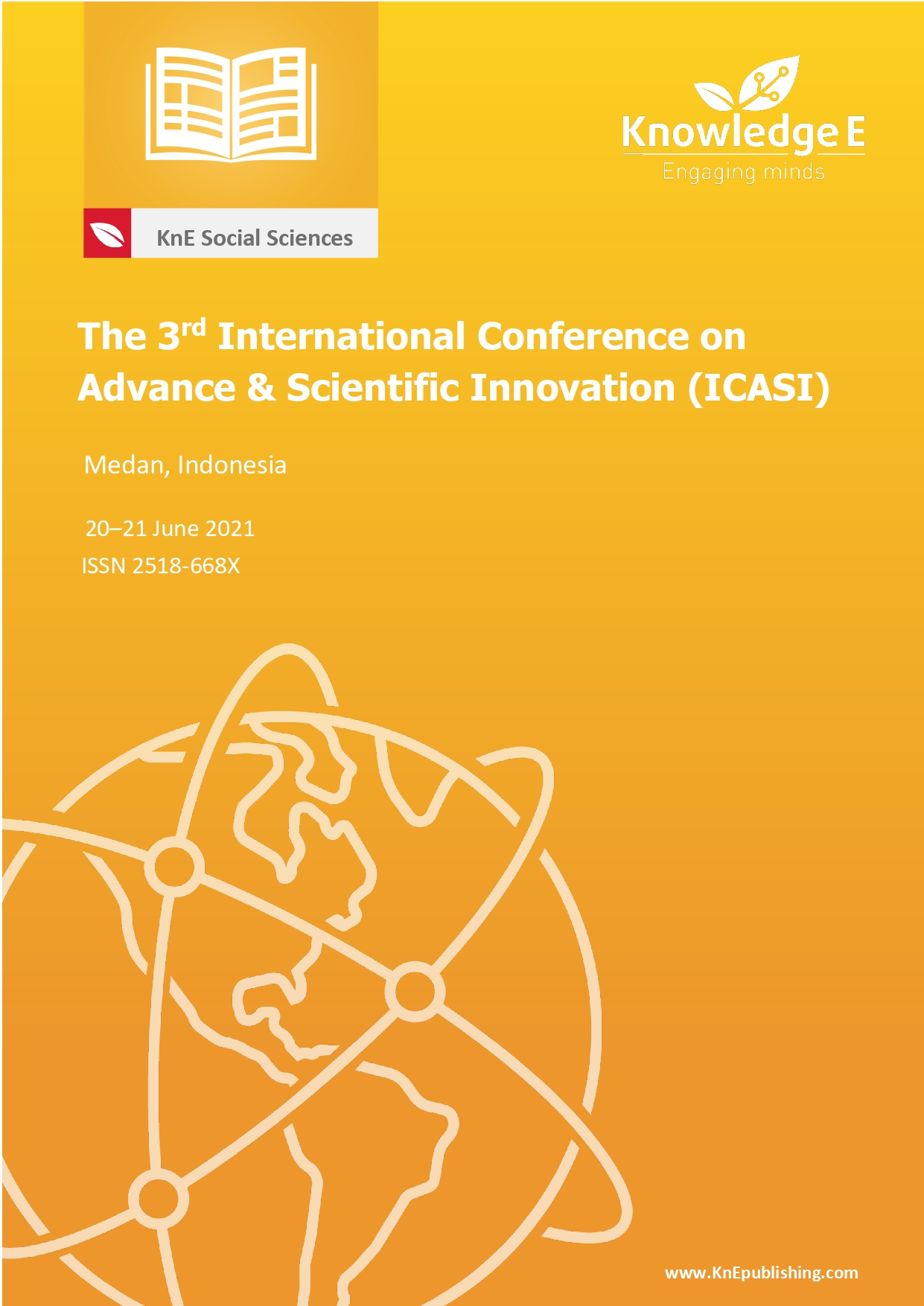Analysis of the Deaf Student's Critical Thinking Skill to Understanding Fractional Concepts Based on Visual and Kinesthetic Learning Styles
DOI:
https://doi.org/10.18502/kss.v7i10.11372Abstract
Critical thinking skills can train construction students’ knowledge, including deaf students whose learning mathematics content is different from hearing students. This study aims to analyze the critical thinking skills of deaf students to fractional concept understanding in the sub-skills of focus, reason, inference, situation, clarity, and overview. This study type is descriptive with a qualitative approach. Data was collected through critical thinking tests and unstructured interviews to explore students’ test results. The data validity was obtained through time triangulation which was carried out by comparing several test results. This study involved 12 subjects comprising eight students with visual learning styles, three with kinesthetic learning styles, and one with other learning styles. Researchers will not review the other learning styles in this study. The critical thinking test used in this study consisted of questions representing the sixth critical thinking sub-skills. Researchers analyzed the collected data through data reduction, presentation, and conclusion. The results show that in understanding the concept of fractions, the critical thinking of deaf students is influenced by their learning style. Visual learning style students’ activities related to images, while kinesthetic learning style students related to concrete objects around them manipulation.
Keywords: Critical Thinking; Deafness; Fractional Concept; Learning Styles
References
[2] Muslimahayati M. Development of critical thinking ability task based on Local Wisdom of South Sumatera on Trigonometry material. AKSIOMA J Progr Stud Pendidik Mat. 2020;9(1):12.
[3] Haryani E, Cobern WW, Pleasants BAS, Fetters MK. Analysis of teachers’ resources for integrating the skills of creativity and innovation, critical thinking and problem solving, collaboration, and communication in science classroom. J Pendidik IPA Indones. 2021;10(1):92–102.
[4] Zubaidah S, Corebima AD, Mahanal S, Mistianah. Revealing the relationship between reading interest and critical thinking skills through remap GI and remap jigsaw. Int J Instr. 2018;11(2):41–56.
[5] Ebiendele Ebosele Peter. Critical thinking: Essence for teaching mathematics and mathematics problem solving skills. African J Math Comput Sci Res. 2012;5(3):39– 43.
[6] Setianingsih H. Keefektifan problem solving dan guided inquiry dalam setting TAI ditinjau dari prestasi belajar, kemampuan berpikir kritis, dan kedisiplinan diri. J Ris Pendidik Mat. 2016;3(2):221.
7] Syahbana A. Peningkatan Kemampuan Berpikir Kritis Matematis Siswa Smp Melalui Pendekatan Contextual Teaching and Learning. 2012;2(1):45–57.
[8] Fatmawati S, Jamiah Y, Hamdani H. Deskripsi Pemahaman Konsep Siswa Dalam Materi Operasi Hitung Bilangan Pecahan Di SMP Boedi Oetomo. J Pendidik dan Pembelajaran Khatulistiwa. 2018;7(9).
[9] Lehmann T, Ifenthaler D. Influence of students’ learning styles on the effectiveness of instructional interventions. IADIS Int Conf Cogn Explor Learn Digit Age, CELDA 2012. 2012;180–8.
[10] Nurbaeti, Nuryanti S, Pursitasari D. Kritis Dan Kemampuan Kognitif Siswa Pada Mata Pelajaran Kimia Di Kelas X Smkn 1 Bungku Tengah. e-Jurnal Mitra Sains. 2015;3(2):24–33.
[11] Ghofur A, Nafisah D, Eryadini N. Gaya Belajar dan Implikasinya Terhadap Kemampuan Berfikir Kritis Mahasiswa. J An-Nafs Kaji Penelit Psikol. 2016;1(2):166– 84.
[12] Wahyuni Y. Identifikasi Gaya Belajar (Visual, Auditorial, Kinestetik) Mahasiswa Pendidikan Matematika Universitas Bung Hatta. J Penelit dan Pembelajaran Mat. 2017;10(2):128–32.
[13] Basri H, Purwanto, As’ari AR, Sisworo. Investigating critical thinking skill of junior high school in solving mathematical problem. Int J Instr. 2019;12(3):745–58.
[14] Bire, A. L., Geradus, U., & Bire J. Effects of Visual, Auditorial, and Kinesthetic Learning Styles on Student Learning Achievement. J Kepaendidikan. 2014;44(2):168–74.
[15] Wiersma W. Research methods in education: An introduction. Boston: Allyn and Bacon; 1999.
[16] Purwoko RY, Nugraheni P, Instanti D. Implementation of Pedagogical Content Knowledge Model in Mathematics Learning for High School. J Phys Conf Ser. 2019;1254(1).
[17] Andriyani, Karim, Fahmi S. The development of a Braille geometry module based on visual impairment students synthetic touch ability with RMT approach. AIP Conf Proc. 2020;2215(April).
[18] Andriyani, Juniati D. The Investigation of Blind Students’ Misconception in Constructing Quadrilateral Analytic Definition Using Geometry’s Puzzle. J Phys Conf Ser. 2019;1417(1).
[19] Andriyani, Maulana M. Cubaritme in the trajectory learning of multiplication concept. In: Journal of Physics: Conference Series. 2019.

